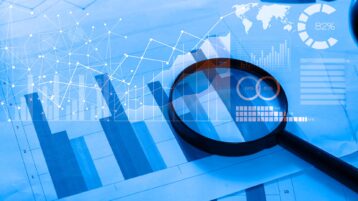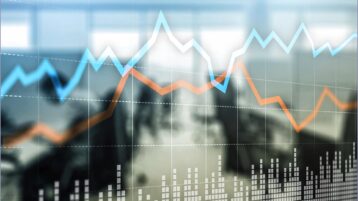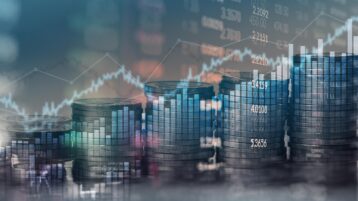Revolving consumer credit has lost its cachet during the pandemic as Americans switched from credit cards to cash and debit cards for their daily spending. Anthony Okolie speaks with Maria Solovieva, Economist, TD Bank, about whether revolving consumer credit can bounce back.
Originally published June 29, 2021
Print Transcript
[MUSIC PLAYING]
- Maria, in your recent report, you talk about the decline in US revolving consumer credit during the pandemic. First of all, what do you mean by revolving consumer credit? And what drove this decline?
- So consumer credit in general terms is simply the funds borrowed by households to buy goods and services. And there are two subcategories of consumer credit-- revolving and nonrevolving credit. Nonrevolving credit or installment credit has usually a term and particular purpose. A very good example is car loans. And you repay these loans in installments, equal installments.
There is also revolving credit, which doesn't have any particular reason to borrow. So you just have funds available to you. And there is no requirement to pay installments. You pay just the minimum payment. And a very good example of revolving credit is credit cards.
So in our report, we focus on revolving credit, which has been declining since March 2020, since the beginning of the pandemic. And there are two major factors that played into the decline of the revolving credit. So number one is a reduction in spending on services. And number two is very generous support programs that help households pay down their credit.
- And you also attribute the fall in credit demand to the different behaviors of higher income and lower households. So what do you mean by that?
- That's right, Anthony. So those two factors that I mentioned, they can be broadly attributed to the behavior of two types of households. So we know that income [AUDIO OUT] programs were very progressive in targeting lower-income households who were also more likely to take up on forbearance programs and delay their mortgage payments and student loan payments. So these programs played a very significant role in helping those households pay down their credit cards.
On the other hand, they were less significant in the higher-income households' credit demand. What's more important for the higher income households was the reduction in the consumption of services. Some categories such as travel, recreation, restaurants, hotels, those categories are very difficult to substitute with virtual alternatives. I can't really think of anything that substitutes going your way to the Caribbean or the thrill of going to the New York City Ballet and watching Tiler Peck on stage live.
And these types of categories also were-- they have a disproportionate share in the consumption basket of the higher-income households. So what happened was the very steep decline and persistent decline in those spending categories resulted in a steep and persistent decline in credit card balances that used to finance this spending.
- And it's very interesting. Do you think this decline is temporary? Or is it more long term in nature?
- Yeah, we think this is a temporary decline. What happened actually in this credit cycle, if you call it that way, that the credit limit of credit cards remained the same. So the balances went to pay down-- the credit repayments basically lowered the credit utilization.
But, historically, credit utilization remains very stable over time. So we are expecting that it's going to return to equilibrium at some point in the future. The more important question is when. And we think that those government programs, once they start running off, we will see also a jump in utilization of credit and credit balances.
- Now, one thing people have talked about is this excess savings that people have been building up during the pandemic. What impact do you think this will have on the pace of the consumer credit recovery?
- Yeah, absolutely. Those savings will definitely slow down the recovery in the consumer credit. Obviously, just for a simple reason, we still have-- people have cash instead of credit to finance those purchases.
What we are actually seeing in some high-frequency data is consumers are spending more on car rentals and travel, restaurants as well. They're spending their debit cards. So debit card purchases on these categories increase, went to 50% in March above their prepandemic levels, whereas the same spendings on credit cards were still 40% below.
- And what's your outlook on US consumer credit over the longer term?
- We are expecting that consumer credit is going to start to recover in the second half of 2021, specifically revolving credit I'm talking about. But we are expecting that overall, consumer credit will still be maybe flat or increasing in 2021. But for revolving credit specifically, once we have more spending on services, we open up the economy, we will see a return of revolving credit as well. And it will take probably approximately a year for the revolving credit to reach its prepandemic level.
- Maria, thank you very much for your time.
- It's my pleasure. Thank you.
[MUSIC PLAYING]
- Maria, in your recent report, you talk about the decline in US revolving consumer credit during the pandemic. First of all, what do you mean by revolving consumer credit? And what drove this decline?
- So consumer credit in general terms is simply the funds borrowed by households to buy goods and services. And there are two subcategories of consumer credit-- revolving and nonrevolving credit. Nonrevolving credit or installment credit has usually a term and particular purpose. A very good example is car loans. And you repay these loans in installments, equal installments.
There is also revolving credit, which doesn't have any particular reason to borrow. So you just have funds available to you. And there is no requirement to pay installments. You pay just the minimum payment. And a very good example of revolving credit is credit cards.
So in our report, we focus on revolving credit, which has been declining since March 2020, since the beginning of the pandemic. And there are two major factors that played into the decline of the revolving credit. So number one is a reduction in spending on services. And number two is very generous support programs that help households pay down their credit.
- And you also attribute the fall in credit demand to the different behaviors of higher income and lower households. So what do you mean by that?
- That's right, Anthony. So those two factors that I mentioned, they can be broadly attributed to the behavior of two types of households. So we know that income [AUDIO OUT] programs were very progressive in targeting lower-income households who were also more likely to take up on forbearance programs and delay their mortgage payments and student loan payments. So these programs played a very significant role in helping those households pay down their credit cards.
On the other hand, they were less significant in the higher-income households' credit demand. What's more important for the higher income households was the reduction in the consumption of services. Some categories such as travel, recreation, restaurants, hotels, those categories are very difficult to substitute with virtual alternatives. I can't really think of anything that substitutes going your way to the Caribbean or the thrill of going to the New York City Ballet and watching Tiler Peck on stage live.
And these types of categories also were-- they have a disproportionate share in the consumption basket of the higher-income households. So what happened was the very steep decline and persistent decline in those spending categories resulted in a steep and persistent decline in credit card balances that used to finance this spending.
- And it's very interesting. Do you think this decline is temporary? Or is it more long term in nature?
- Yeah, we think this is a temporary decline. What happened actually in this credit cycle, if you call it that way, that the credit limit of credit cards remained the same. So the balances went to pay down-- the credit repayments basically lowered the credit utilization.
But, historically, credit utilization remains very stable over time. So we are expecting that it's going to return to equilibrium at some point in the future. The more important question is when. And we think that those government programs, once they start running off, we will see also a jump in utilization of credit and credit balances.
- Now, one thing people have talked about is this excess savings that people have been building up during the pandemic. What impact do you think this will have on the pace of the consumer credit recovery?
- Yeah, absolutely. Those savings will definitely slow down the recovery in the consumer credit. Obviously, just for a simple reason, we still have-- people have cash instead of credit to finance those purchases.
What we are actually seeing in some high-frequency data is consumers are spending more on car rentals and travel, restaurants as well. They're spending their debit cards. So debit card purchases on these categories increase, went to 50% in March above their prepandemic levels, whereas the same spendings on credit cards were still 40% below.
- And what's your outlook on US consumer credit over the longer term?
- We are expecting that consumer credit is going to start to recover in the second half of 2021, specifically revolving credit I'm talking about. But we are expecting that overall, consumer credit will still be maybe flat or increasing in 2021. But for revolving credit specifically, once we have more spending on services, we open up the economy, we will see a return of revolving credit as well. And it will take probably approximately a year for the revolving credit to reach its prepandemic level.
- Maria, thank you very much for your time.
- It's my pleasure. Thank you.
[MUSIC PLAYING]



























